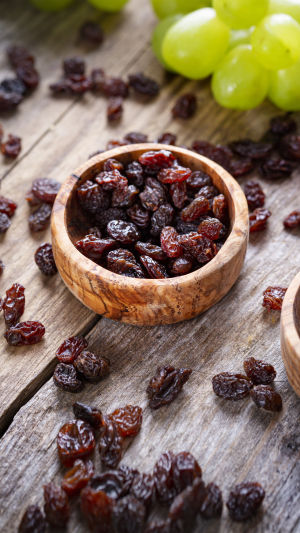Drying fruits leads to a significant loss of vitamin C, but it's a mistake to think that dried fruit becomes devoid of nutrients and merely comprises carbohydrates.
Many of the benefits of fresh fruit persist in dried form, and there are some advantages that people tend to overlook.
One of the key benefits is the retention of the fruit's fiber, particularly in the skin. While people often discard or peel fruit skin before eating, it contains the highest concentration of dietary fiber.
Through the drying process, the fiber remains intact, ensuring that the nutritional benefits of the fruit are not lost. Raisins, for instance, are consumed with their skin intact, ensuring that none of the fiber is wasted.
The process of fruit drying involves cleaning, slicing, and other pretreatment before utilizing natural air-drying, sun-drying, low-temperature freeze-drying, deep-frying dehydration, or other methods to remove most of the water content.
Traditional methods like air-drying and sun-drying concentrate the fruit's natural flavors, while industrial methods such as deep-frying dehydration may increase the fruit's oil content, making it less suitable for health-conscious consumers.
For instance, many popular fruit and vegetable crisps are created through deep-frying dehydration. Conversely, common dried fruits like strawberries and okra undergo freeze-drying, a more complex process that retains the fresh fruit flavor and results in a crispy texture.
Fresh fruits often contain active proteases and tannins, which can be harsh on the digestive tract. Drying fruits inactivates proteases and polymerizes tannins, reducing their impact on digestion. This makes dried fruit a suitable option for individuals with digestive issues, particularly the elderly who may experience discomfort when consuming fresh fruits.
While dried fruits may concentrate certain nutrients found in fresh fruits, such as dietary fiber, the processing technology can also lead to the depletion of heat-sensitive nutrients like vitamin C, vitamin B1, and polyphenol substances.
Additionally, dried fruits often have higher sugar content compared to fresh fruits. For example, products like persimmon cake contain three times more total sugar than their fresh counterparts, while dried strawberries have nine times more total sugar than fresh strawberries.
Can freeze-dried fruit serve as a complete replacement for fresh fruit? While freeze-dried fruits closely resemble fresh fruits in appearance and volume, they are significantly denser in calories due to the removal of water and enrichment of sugars.
Eating 200g of freeze-dried apples, for example, is equivalent to consuming the calorie intake of 1.3kg of fresh apples, or roughly four fresh apples.
Dried fruits offer a convenient and nutritious alternative to fresh fruits, retaining many of their health benefits despite the loss of some nutrients during processing. However, it's important to be mindful of added sugars and processing methods when incorporating dried fruits into a balanced diet.
Dried fruits offer practical benefits, such as extended shelf life and convenience. They are lightweight and portable, making them an ideal snack for on-the-go consumption, hiking, or traveling.
Additionally, dried fruits can be incorporated into various recipes, including baked goods, and salads, adding natural sweetness and texture. Their versatility makes them a versatile ingredient in both sweet and savory dishes, providing a burst of flavor and nutrition.





